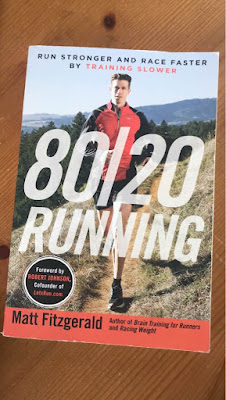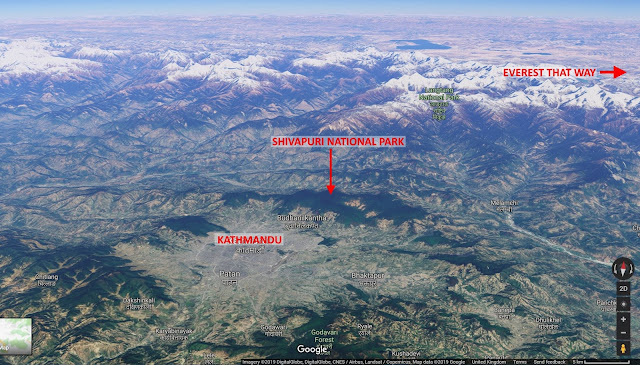Nepal Training update #1
Countdown to Nepal – 17weeks
Next race – Thunder run 24 hour relay (20th/21st July)
A while back, when I had a generous 20 weeks to go before the Kieldermarathon weekend, where I plan to take on the run bike run and the marathon over the two days, I sat down to write my training plan. Here is my simple, but hopefully not flawed logic:
- I train for Kielder marathon following a fairly standard 18 week marathon training plan;
- Throw in a good helping of cross training on the bike (commuting, the occasional long ride), swap one or two of the long runs for Brick sessions (run-bike-run);
- Smash Kielder weekend like a boss then in the 4 weeks before departing for Nepal focus on recovery and sustaining fitness.
Sounds simple and solid even if I do say so myself.
Training plan
I have written my training plan based around the excellent book from Matt Fitzgerald, “80/20 Running” (On amazon here but, as they say, available from all good bookshops, and probably a few bad ones). Apart from the appeal of running faster by running slower, I was drawn to the book because of training volume. Compared to my peers, at least how the probably skewed view I get from Strava appears, most people who finish at a similar time to me for races, or those I see improving faster than me at the running club, are putting in more mileage in a typical week. I see increasing my mileage (often as little as 20 miles a week) as the “quick hit” to take my running to the next level, especially as endurance is currently more of a limiting factor than speed. My concern is over injury risk.
This is where Matt comes in. I would recommend anyone interested in training philosophy to read his book and come to your own conclusion but I found it a very interesting concept. Matt espouses a philosophy, based on the training habits of the undeniably successful East African athletes, of 80% of a weeks training being at a low or moderate intensity, the remaining 20% at high intensity. When I first read his book I looked over a few weeks of training, specifically at my heart rate, and I was disappointed, but not all together surprised, to find out that my ratio was almost an exact opposite of what Matt recommends. Thanks to my relatively low mileage it seemed conceivable that I could reach the golden 80/20 ratio simply by adding some easy runs to my routine, the trick will be in building the mileage carefully.
Using the book, and the "Level 3" marathon training plan as a base, I set about writing my plan, adjusted to suit my scheduled races. I also intend to replace two of the sessions each week with my normal club session, unless the goal of the session is significantly different to my plan.
Implementing the plan
All of this happened a few weeks ago. As I write this it is the beginning of week seven of the plan. Completely out of character, for the last month and a half I have stuck to that plan like a limpet, every step completed at the prescribed heart rate, and the 80/20 ratio accurate to within a fraction of a percentage. I feel like I am flying, both physically, and mentally thanks to the confidence that comes from successfully following a training plan you truly believe in.
….Is what I wish I was telling you. In reality, through work commitments I have spent only two of the last seven weeks at home, and for those two weeks, following a tough race at the Edinburgh Seven Hills, I spent most of my time suffering with a serious bout of man flu. The flu became a near constant stomach ache. Not only was running not an option, but my second favourite activity of eating was something to approach with caution.
But it's fine. Honestly, completely fine. Really, it's fine, I'm fine. I'm not worried. You calm down!
OK, maybe I'm a little worried. That taunting counter telling me I have only 12 weeks to Kielder and I am yet to log a long training run. The nagging voice that says the 80/20 approach takes time and commitment to work. Only after weeks, possibly months of dedication does the heart rate and body respond to the training, allowing a higher pace to be sustained at a lower HR, and ultimately transforming the engine into a more efficient endurance machine. Time is a bank account that is running down fast, and so far I have little in the way of goodies to show for what I have spent.
Thanks to my years of listening to the Marathon Talk Podcast I am a believer in the strength of a positive mental attitude. However, as I all to often find, believing in something doesn't always make it easier to apply. For the next few weeks I have no chance of getting stuck into the plan, whatever way I see fit to butcher it into something that makes sense given the huge false start.
I recently completed the Chevy Chase for the third successive year (if you don't know the race you can read my report from 2017 on the TBH website). It is a tough but beautiful 20 mile race through the Northumberland hills, taking in the two highest points. I spent the race telling myself I was “taking it steady” and then suffered a return of the stomach pains in the second half. With that in mind, the fact I completed the race only 2 minutes slower than last year does give me some slightly renewed confidence that I have some residual endurance, but the fallout from the race has kept me from my plan. With only 2 weeks between the Chevy and the Thunder Run 24 hour relay race, I have had to focus on recovery and preservation. A task made harder by once again spending the weekdays in between in Germany eating too much Schnitzel and sampling far too much Weiss bier in the evenings.
Ah well, it would be boring if it all went to plan right?
You can even subscribe so you don't miss a post on my blog!
Follow me on Instagram @runningthebreeze and now Facebook as I take on the Nepal Impact marathon with @hantoddie!
You can even subscribe so you don't miss a post on my blog!




Comments
Post a Comment
Enjoy the post or think you have just wasted your time? Let me know!